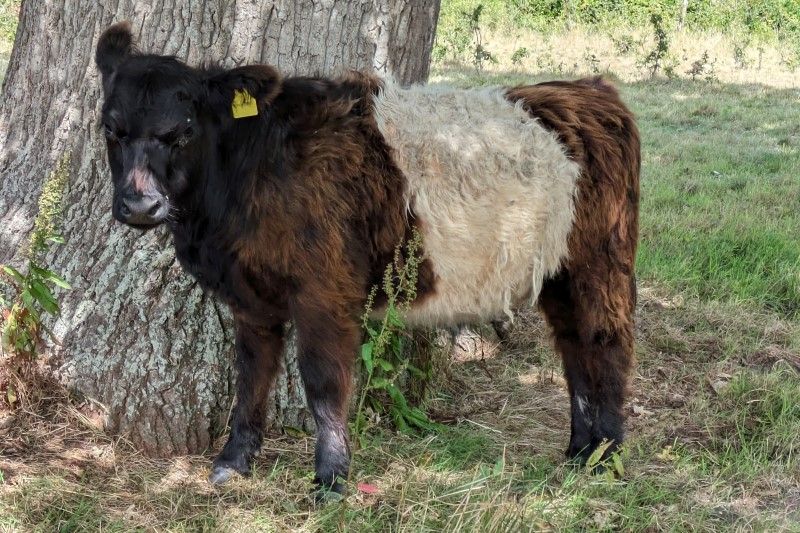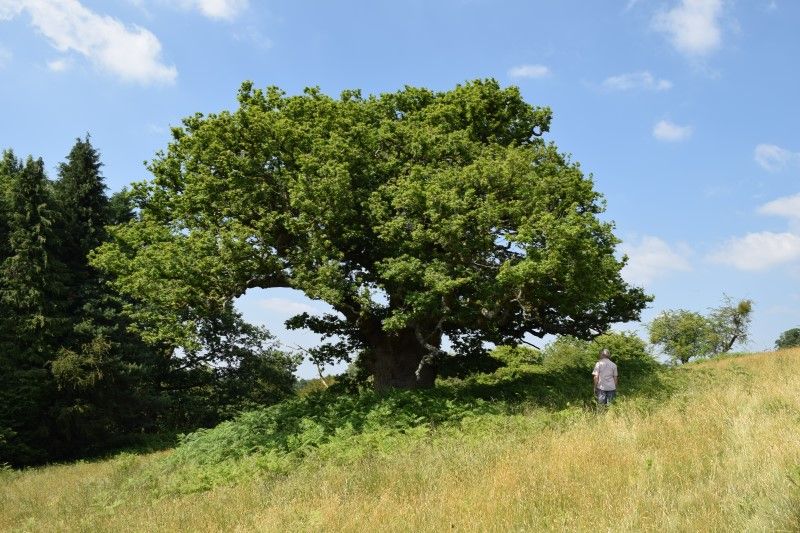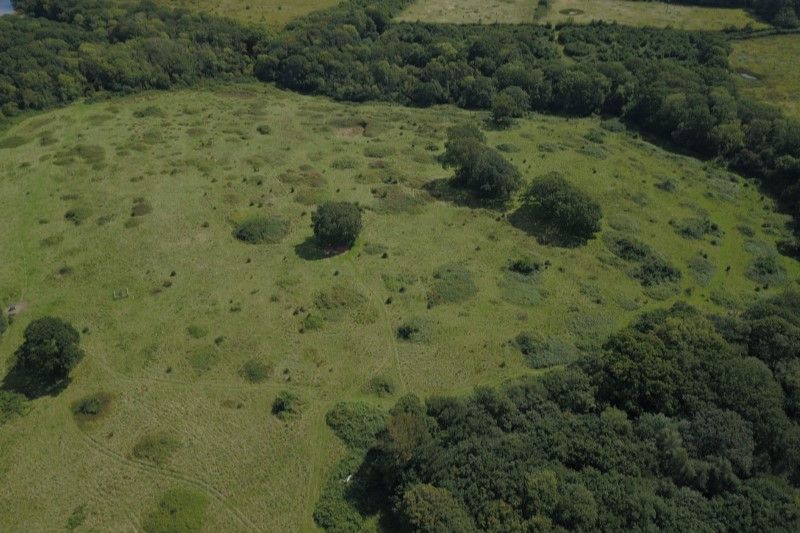What is wood pasture?
Wood pasture is a man-made mosaic habitat featuring open-grown veteran and ancient trees, an open ground layer such as grassland or heathland, grazing animals, wood decay and flowering shrubs. The structure and appearance can vary depending on historic and current management. If the site is in good condition, there will be multiple generations of trees for future continuity. Wood pasture supports an amazing array of species, from invertebrates and fungi to birds and mammals.
Wood pasture creation at Briddlesford
It’s an exciting time at Briddlesford, where we are almost a year into our 10-year plan to create 27 hectares of wood pasture across eight fields. Of course, it won’t be officially classed as wood pasture until there are veteran trees, which will take around a hundred years. In these formative years, we’ve removed the cattle for two years to allow thorny scrub such as hawthorn and bramble to grow. This protects young seedlings from grazing animals and provides a nectar source for insects.
Tree planting
During January and February 2024, we plan to build 18 tree cages and plant a variety of trees and shrubs such as oak, hazel, elm and spindle inside them. This will supplement the trees and shrubs that will naturally regenerate. The tree cages will be constructed of untreated timber, harvested from woodland on the reserve itself. We won’t use nails or barbed wire so there will be no hazardous waste to dispose of in the future. They’ll be allowed to rot down and the decaying wood will support numerous species of fungi and invertebrates. We won’t be using plastic tree guards either, which means less plastic in the environment and also saves removing them further down the line. We will have to accept some losses from rabbit predation but we are planting so densely within the cages that this shouldn’t be a problem. This type of planting mimics natural processes.
Elms
Dutch elm disease was accidentally introduced to the UK in the 1960’s. It spread very quickly and has killed millions of trees over the last 60 years. A lot of research has gone into developing new disease resistant varieties of elm, and one cultivar in particular (called Lutece) stands out as being highly resistant to the disease whilst also being very similar to our native elm.
Examples of this cultivar planted on the Isle of Wight in 2003, have been confirmed 12 years later to be supporting a breeding colony of white-letter hairstreak butterflies. Elm is the larval foodplant for this Priority Species and we aim to plant 20 elms across Briddlesford to provide future habitat for them.
Funding
We have a Countryside Stewardship grant; a Defra-funded scheme helping farmers and land managers to look after their land in a way that increases wildlife and improves habitats. This scheme runs for five years and will part-fund our wood pasture creation.
We were also recently awarded a grant by the Isle of Wight National Landscape’ FiPL (farming in protected landscapes) fund. This will pay for 16 wooden tree cages, made from sweet chestnut and oak felled at Briddlesford woods, to be erected. 120 trees and shrubs will be planted inside each wooden cage.
Into the future

Creation of any habitat requires a long-term view, but even more so in the case of woodlands and wood pasture. In the short term, we’ll manage the fields by grazing with suitable cattle (belted Galloways at the moment) and will adjust the grazing levels or type as necessary to maintain a balance between the open areas, scrub and trees. Looking to the future we will need to plan successive plantings over the next several decades to ensure a good spread of tree ages.
If you want to know more about wood pasture management and creation please see our wood pasture and parkland pages.


